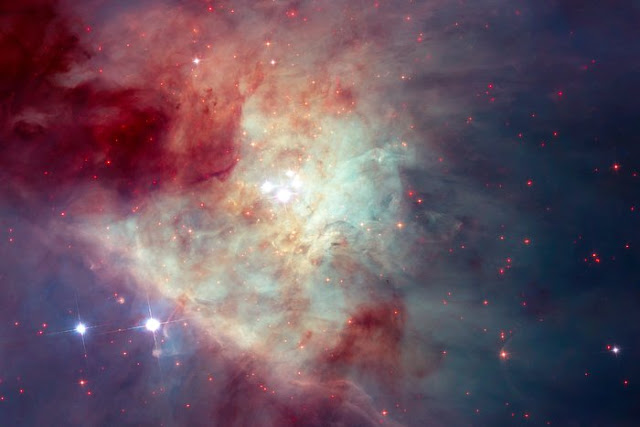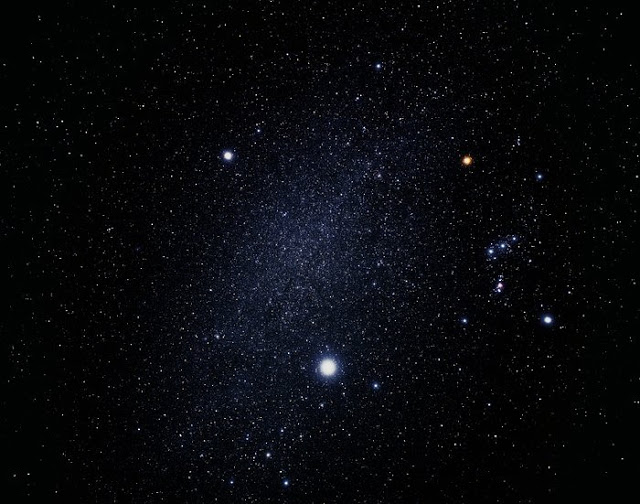

| Online: | |
| Visits: | |
| Stories: |

| Story Views | |
| Now: | |
| Last Hour: | |
| Last 24 Hours: | |
| Total: | |
Hunting Rogue Planets and Runaway Stars
The Orion Nebula is the closest star formation region to Earth, only 1400 light-years away. It is a turbulent place — stars are being born, planetary systems are forming and the radiation unleashed by young massive stars is carving cavities in the nebula and disrupting the growth of smaller, nearby stars.
This composite image of the Kleinmann-Low Nebula, part of the Orion Nebula complex, is composed of several pointings of the NASA/ESA Hubble Space Telescope in optical and near-infrared light. Infrared light allows to peer through the dust of the nebula and to see the stars therein. The revealed stars are shown with a bright red colour in the image.
With this image, showing the central region of the Orion Nebula, scientists were looking for rogue planets and brown dwarfs. As side-effect they found a fast-moving runaway star.

Credit:NASA, ESA/Hubble
Because of this ongoing turmoil, Hubble has observed the nebula many times to study the various intriguing processes going on there. This large composite image of the nebula’s central region, combining visual and near-infrared data, is the latest addition to this collection.
This video starts with a ground-based image of the night sky, taken by Akira Fujii, zooms on the star formation region of the Orion Nebula — observed by Martin Kornmesser — and ends with a detailed view of the nebula as seen by Hubble.
Credit:ESA/Hubble, A. Fujii, M. Kornmesser Music: Johan B. Monell (www.johanmonell.com)
The relative speed of the star was calculated by comparing observations made in 1998 with the recent ones. The speed of the newly discovered star is almost 30 times the speed of most of the nebula’s stellar inhabitants.
This ground-based image was taken by Japanese amateur astronomer Akira Fujii and shows the constellations Orion, Canis Minor and Canis major.

Credit:Akira Fujii
Whether the new star is indeed the missing — and the last — piece of the puzzle will require further observations. So will the answer to the question of why the original star system broke apart in the first place. While there are several theories — interactions with other, nearby stellar groups, or two of the stars getting too close to each other — none can be ruled out or confirmed yet.
Contacts and sources:
Mathias Jäger
ESA/Hubble
Source:


